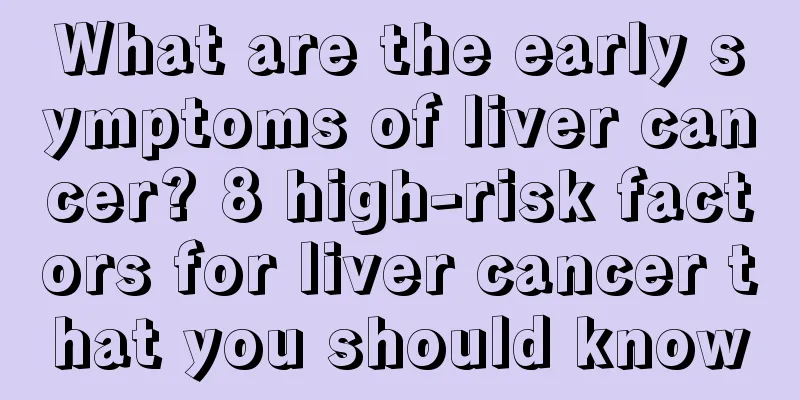What are the treatments for glioma

|
Glioma is a brain tumor with a high incidence rate in modern times. It endangers human health and even threatens human life, so patients pay great attention to it. Once a glioma is diagnosed, it must be actively treated. So what are the treatments for glioma? Let's learn about it with the editor below. 1. Surgical treatment: The principle is to remove the tumor as much as possible while preserving neurological function. Early stage tumors that are small should be completely removed. For superficial tumors, the cortex can be cut around the tumor, and for tumors in the white matter, the cortical incision should be made away from important functional areas. When separating the tumor, it should be done at a certain distance from the tumor and in normal brain tissue, not close to the tumor. Especially for relatively benign tumors such as astrocytomas and oligodendrogliomas in the frontal lobe or anterior temporal lobe or cerebellar hemispheres, better therapeutic effects can be achieved. For larger tumors located in the frontal lobe or the front part of the temporal lobe, lobectomy can be performed to remove the tumor together. For those in the frontal lobe, the posterior edge of the incision should be at least 2 cm in front of the anterior central gyrus, and in the dominant hemisphere, the motor language center should be avoided. For those in the temporal lobe, the posterior edge should be before the inferior anastomotic vein, and damage to the lateral fissure vessels should be avoided. A small number of tumors located in the occipital lobe can also be lobectomized, but visual field hemianopsia will remain. If the frontal or temporal lobe tumor is too extensive to be completely removed, the tumor can be removed as much as possible while the frontal pole can be removed or internal decompression can be performed at the frontal pole, which can also prolong the time of recurrence. 2. Radiotherapy: The radiation sources used for external irradiation include high-voltage X-ray therapy machines, 60Co therapy machines, electron accelerators, etc. The latter two are high-energy rays with strong penetrating power, low skin dose, small bone absorption, and little side scatter. The dose of the accelerator is concentrated at the expected deep part. Beyond this depth, the dose drops sharply, which can protect the normal brain tissue behind the lesion. Radiotherapy should be performed as soon as possible after the general condition recovers after surgery. The irradiation dose is generally 5000-6000cGy for gliomas, which is completed within 5-6 weeks. For those with high sensitivity to large irradiation field radiotherapy, such as medulloblastoma, 4000-5000cGy can be given. The sensitivity of various types of gliomas to radiotherapy varies. It is generally believed that poorly differentiated tumors are more sensitive than well-differentiated ones. Medulloblastoma is the most sensitive to radiotherapy, followed by ependymoblastoma. Glioblastoma multiforme is only moderately sensitive, and astrocytoma, oligodendroglioma, pinealoma, etc. are even worse. For medulloblastoma and ependymoma, because they are easy to spread with cerebrospinal fluid, full spinal canal irradiation should be included. 3. Chemotherapy: Highly lipid-soluble chemotherapy drugs that can pass through the blood-brain barrier are suitable for brain gliomas. In astrocytoma grades III to IV, the blood-brain barrier is damaged due to edema, allowing water-soluble macromolecular drugs to pass through. Therefore, some people believe that the selection of drugs can be expanded to many water-soluble molecules. However, in fact, in the area around the tumor where proliferating cells are dense, the damage to the blood-brain barrier is not serious. Therefore, the drugs selected should still be mainly lipid-soluble. 4. Immunotherapy: Immunotherapy is still in the trial stage, and its efficacy is uncertain and needs further research. 5. Other drug treatments: For malignant glioma, hormone therapy can be given first, with dexamethasone being the most effective. In addition to reducing brain edema, it also has the effect of inhibiting the growth of tumor cells. It can alleviate symptoms, and then surgical treatment can be performed. |
>>: What is the best treatment for glioma
Recommend
Are the early symptoms of brain cancer obvious?
The early symptoms of brain cancer are usually no...
Six ways to make it easier to sleep on hot, sweaty nights
Sleeping in summer is uncomfortable. Cooler tempe...
Will breast cancer metastasize to the stomach?
Can breast cancer metastasize to the stomach? Exp...
Teratoma Rehabilitation Hospital
Some people may be familiar with teratoma, but I ...
Health care knowledge for lung cancer
Cancer does not occur suddenly. Animal experiment...
How to wash yellow stains on underwear
Underwear is our most important underwear and pla...
How soon can I have a blood test for pregnancy?
Women want to know whether they are pregnant. The...
What to do if the car tire pressure is too high
Car tire problems are the most common situation. ...
What is the method of sternocleidomastoid muscle massage?
In life, many people have the habit of doing mass...
Is it good to do atomization frequently?
In life, when many people see a doctor for illnes...
How to use hair oil
Many people often use some hair care products whe...
The second-hand goods you don't want become treasures in other people's hearts
There are many goods in our lives that are ignore...
What is non-Hodgkin's lymphoma and how to treat it
What is Non-Hodgkin's Lymphoma? How is it tre...
How to reduce swelling after being stung by a bee? This is the most effective way
Spring is the season when flowers bloom and bees ...
Toothache causes earache, timely pain relief is very important
Toothache sometimes involves pain in many parts o...









